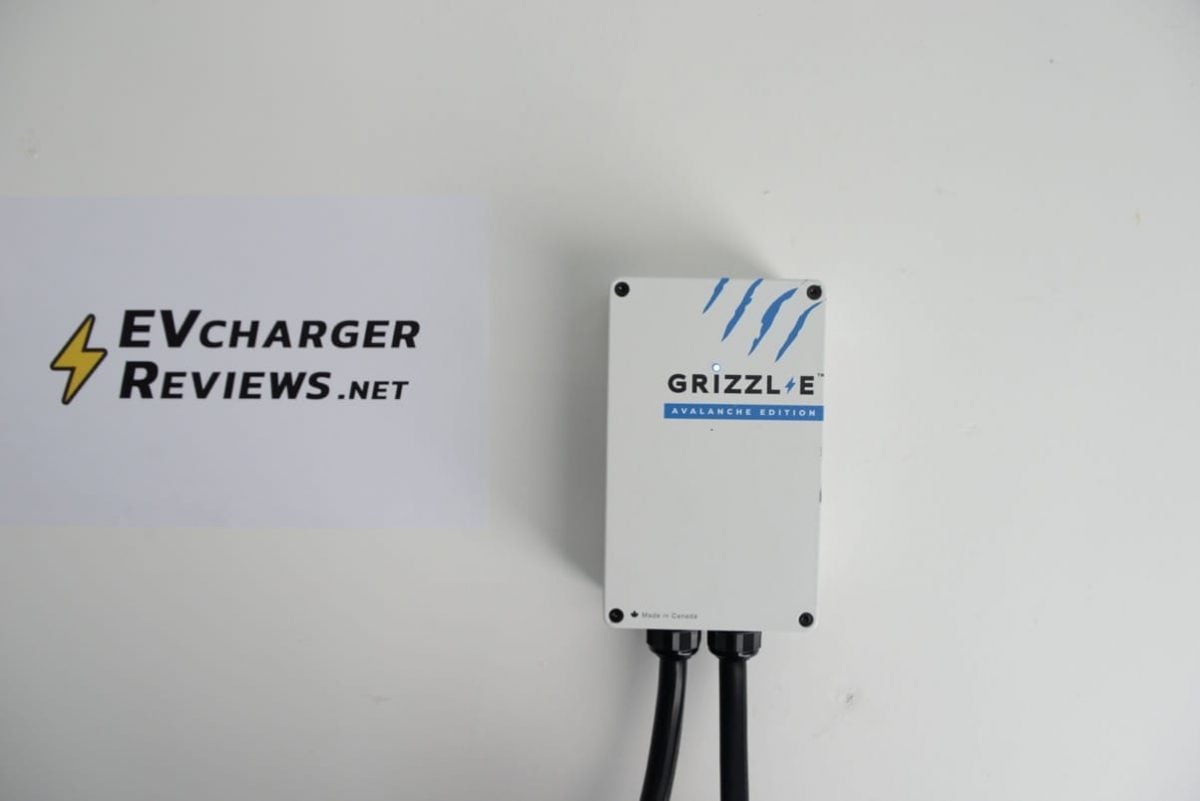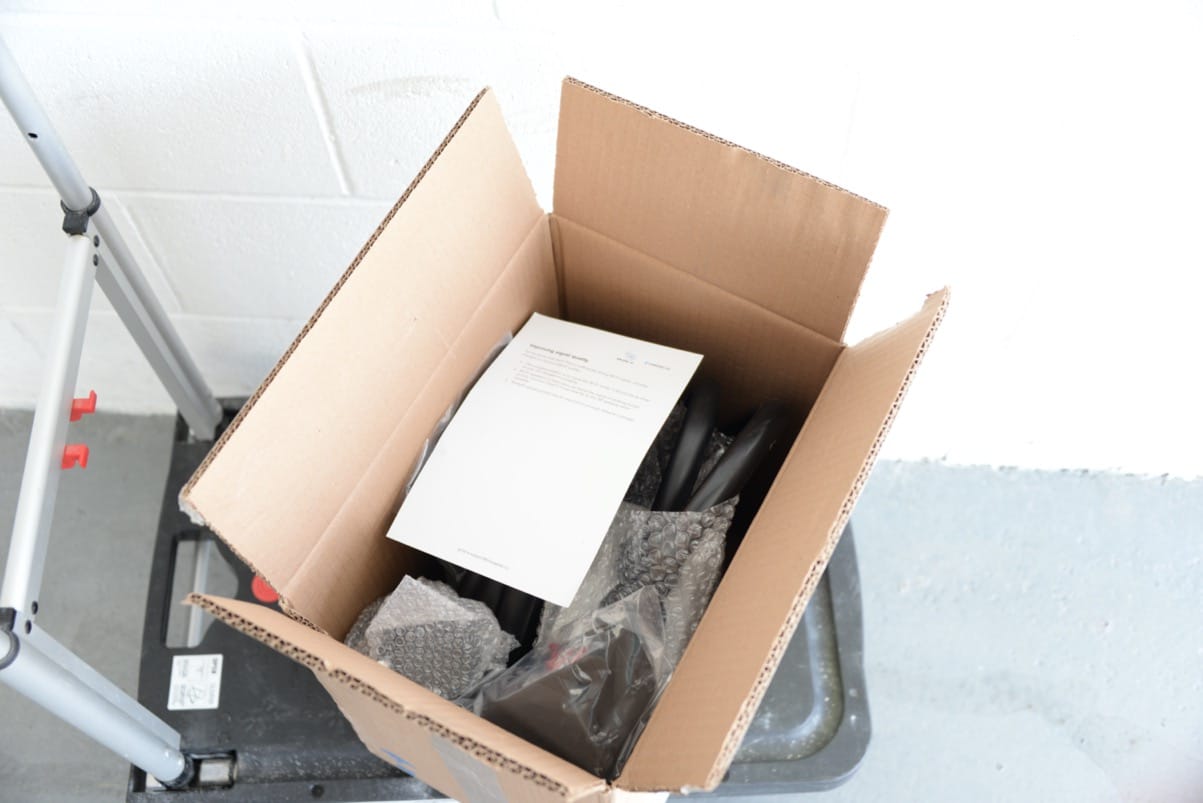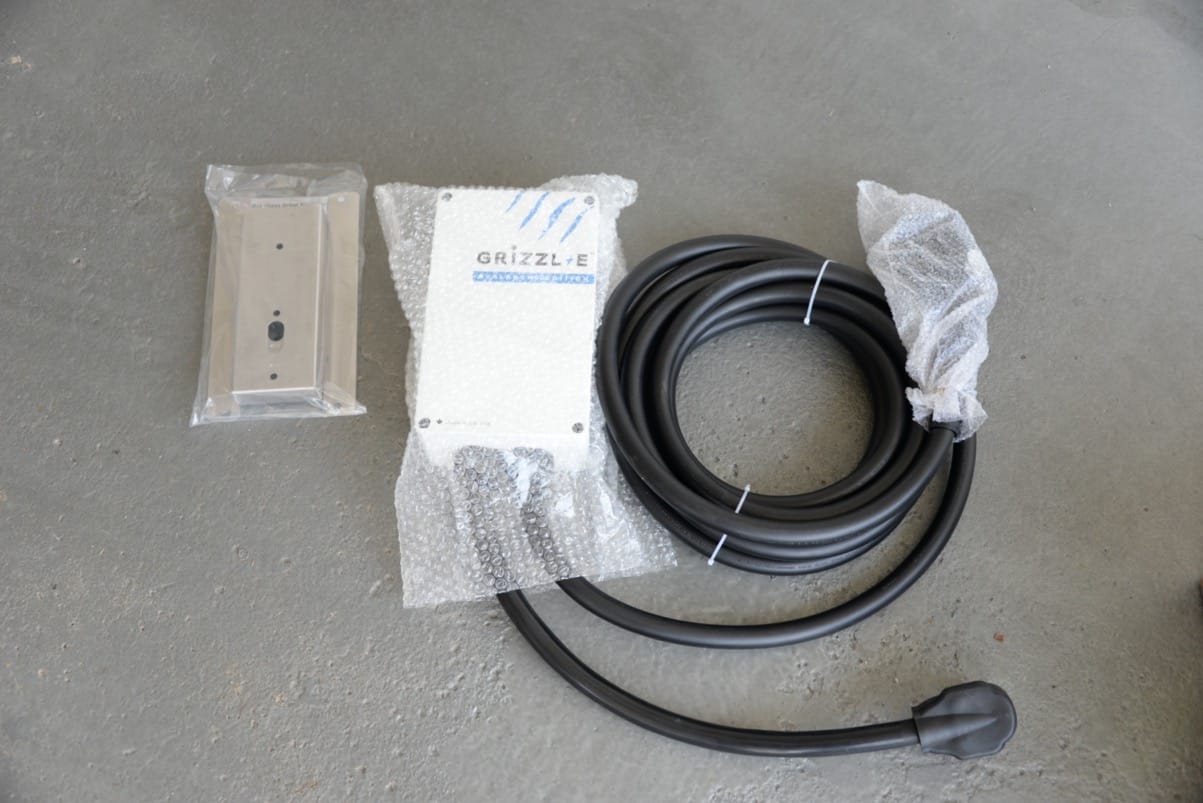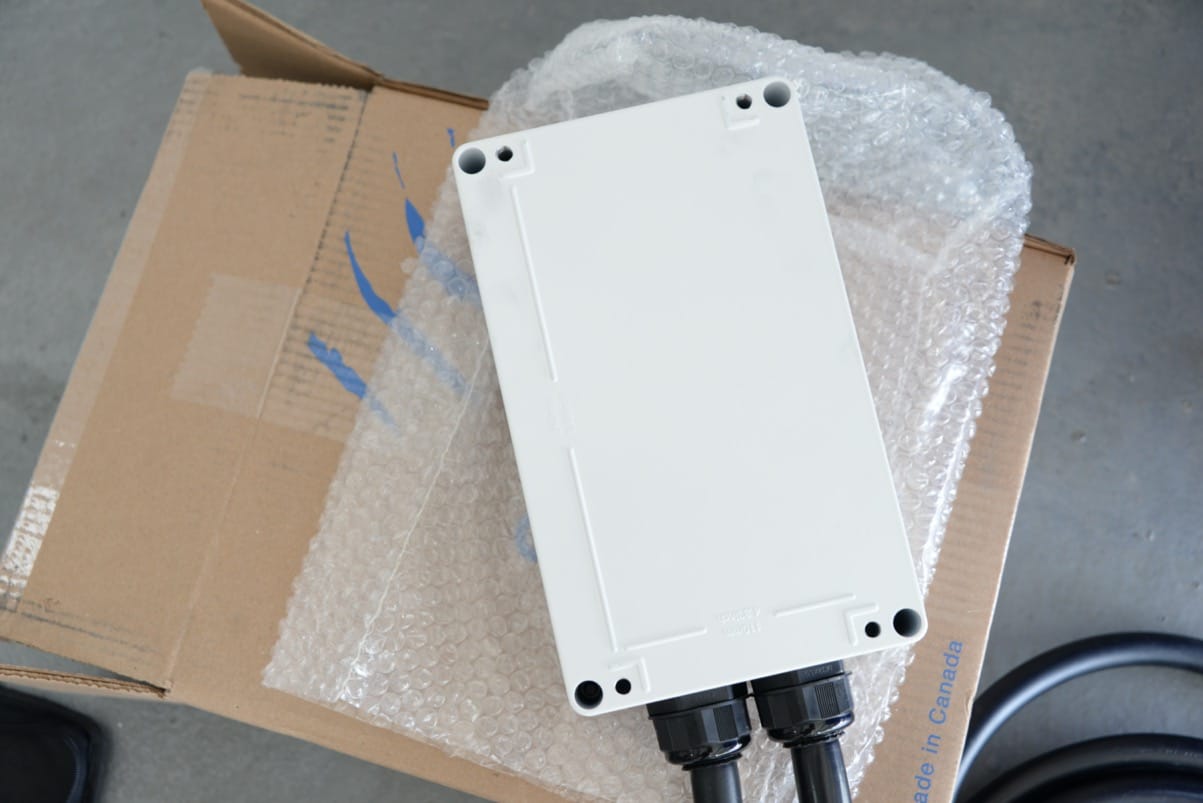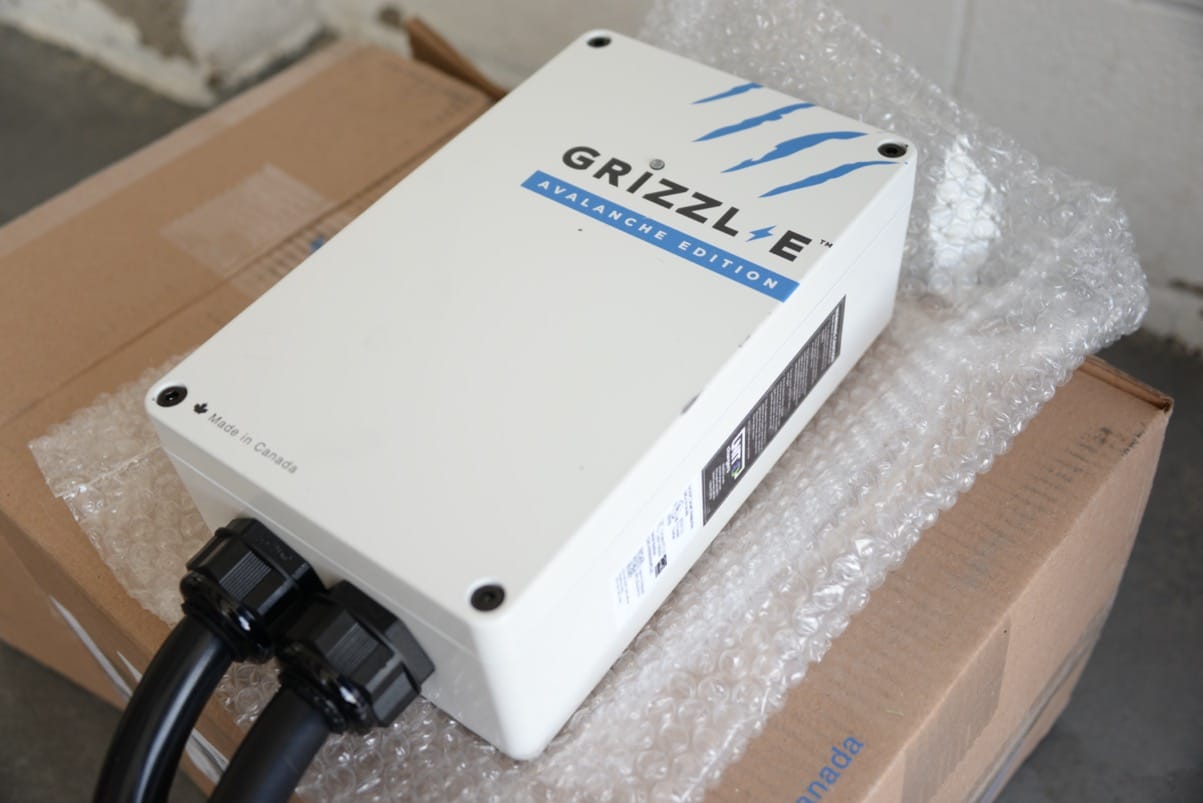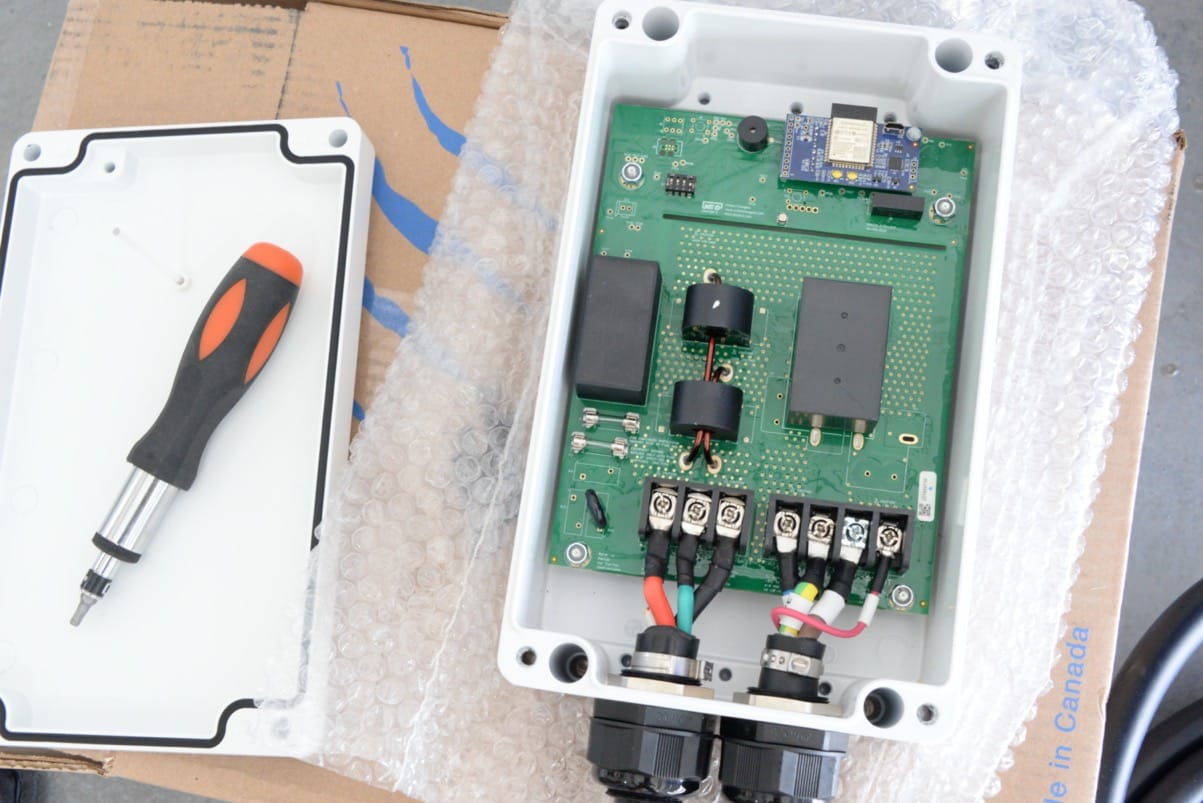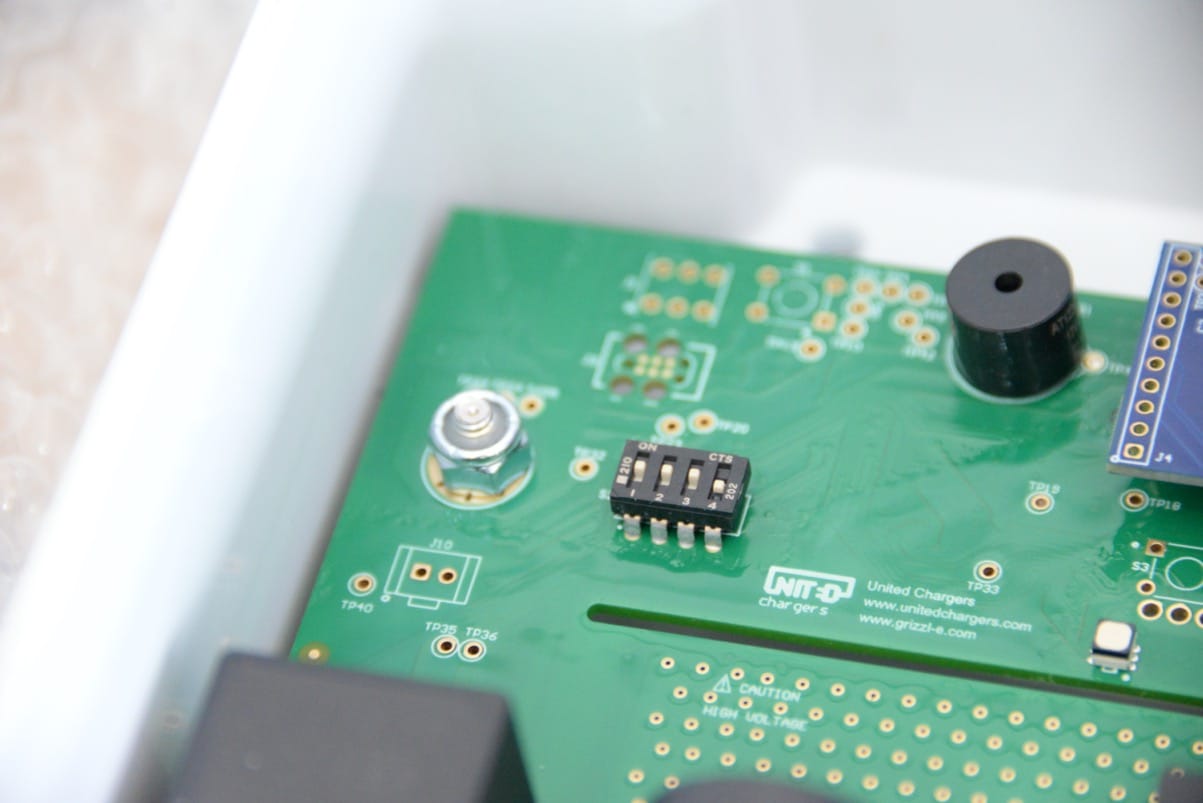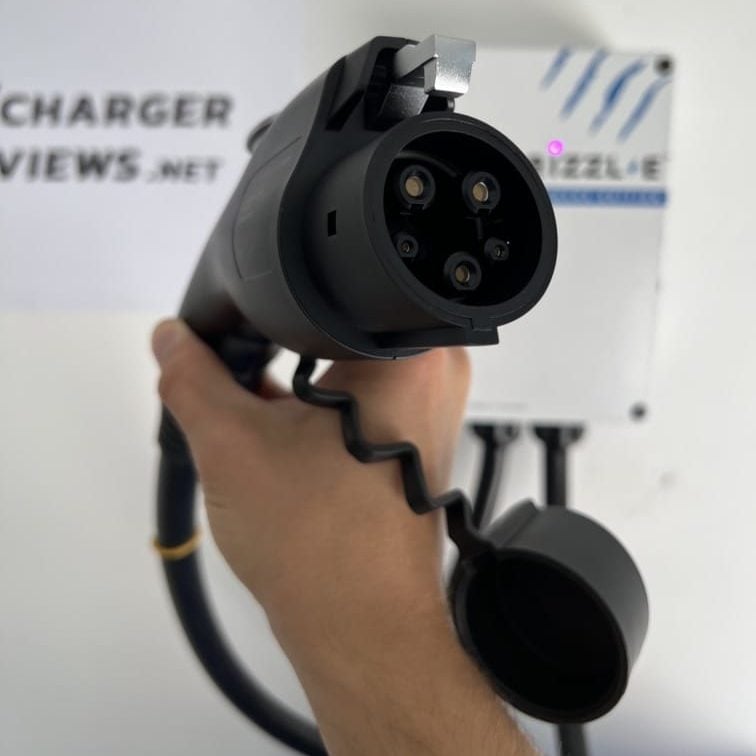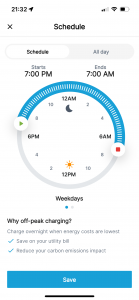Grizzl-E Level 2 home charger is manufactured by United Chargers and comes in two main versions; a basic Classic charger and a connected “Smart” version for about $80 extra. Both versions top out at 40 amps (~9 kW) and feature identical hardware other than the extra connectivity option. The charger also comes in several color variations, and both NEMA 14-50 and NEMA 06-50 input wall plugs.
The Grizzl-E charger is one of the most popular home chargers on the North American market. It represents a great value for a 40 amp charging station and impressive durability for extreme weather conditions. We recommend this home charger to anyone looking for a balance of value, power, and durability.
Our Rating: 4.2/5
Originally published on July 1, 2022, and then substantially updated on August 20, 2023, after more than a year of frequent use.
Packaging and Installation
The Grizzl-E arrives in an unassuming, single layer, compact cardboard box. Inside is the charger box itself, a bag containing accessories and mounting hardware, and an instruction manual. The charger itself is wrapped in bubble wrap, but this is mainly for cosmetic protection. The aluminum exterior shell of the charger gives this product unmatched durability in a market full of mostly plastic home chargers.
Despite the careful packaging, our review unit did some with some minor paint scuffs around the edges, and around the screw holes. But this is likely from the manufacturing process, not transportation. A few Amazon reviewers also pointed out paint and finish issues, especially on white units like ours. We are willing to overlook these minor issues because this product is more about utility and value, and less about style.
The Grizzl-E comes with a metal mounting plate that is secured to the wall with four screws. Points to Grizzl-E for using durable metal mounting points where many competitors are using plastic. Overall installation is fairly easy, but it is recommended to secure at least one side of the charger to strong studs in the wall. The weight of the charger and the cord may be too much for just holes in the drywall.
Hardware and Design
We loved the simple and honest exterior design of the Grizzl-E. It’s a painted aluminum enclosure with a single LED indicator light. It is durable and likely cost-effective to manufacture. The Grizzl-E charger is NEMA Type-4 rated, among the best in the industry for water tightness and extreme climate resistance.
There are four hex screws around the perimeter of the device for easy user access. The front cover is user removable, and a good rubber seal sits around the cover to keep moisture out. The user will only ever need inside access to change the amperage limit of the home charger. Unlike other chargers on the market, it is not possible to set an amp limit from the app. The amperage is configured by hardware dip switches inside the box. We actually see this as a safety benefit because it is less prone to software/app bugs. Hardware dip switches can be used to limit the maximum power output of the Grizzl-E charging station, to prevent overloading less powerful circuits.
One area where we feel the Grizzl-E comes short is with the included charging cord holder. The single-piece plastic design feels cheap, and not very durable. The flat sides of the home charging box also means that it is not possible to wrap the charging cord around the main unit, and the use of an external cord holder is required. However, if the user is unsatisfied with the included cord holder, it can be upgraded to a third party J1772 wall holder.
Charging Cord and J1772 Connector
This home EV charger comes with a 24-foot-long vehicle charging cable. While not the longest in the industry, 24 feet is plenty long to reach most car charging ports regardless of parking orientation. The cord itself feels thick, and durable but still fairly pliable. Many EV charging cords struggle in the colder winter months when the rubber material hardens in the cold. The Grizzl-E charger is rated for operation between -22F to 122F, so we do not anticipate problems with outdoor charging in cold climates. We will update this review in a few months if that changes,
The J1772 connector is made of hard plastic material with a silver-painted release button. We had no trouble sliding this connector into a Tesla charging adapter for this review. We liked how the J1772 connector comes with a detachable cap, for when not in use. This again, helps with weatherproofing the hardware for extremely wet and cold environments.
August 2023 Update: After using the Grizzl-E charger in all four seasons, we can confidently recommend the unit for cold climates. The charging cord remains relatively pliable in cold temperatures.
Connectivity and Software
Grizzl-E does not have its own charging app for managing home chargers. For the “Smart” version of the Grizzl-E Level 2 charger, the user will need to download the third-party ChargeLab app. Integration is easy, but functionality is very basic. The app allows the user to monitor the status and schedule charging. There are no charger-locking features like some of the competitors include.
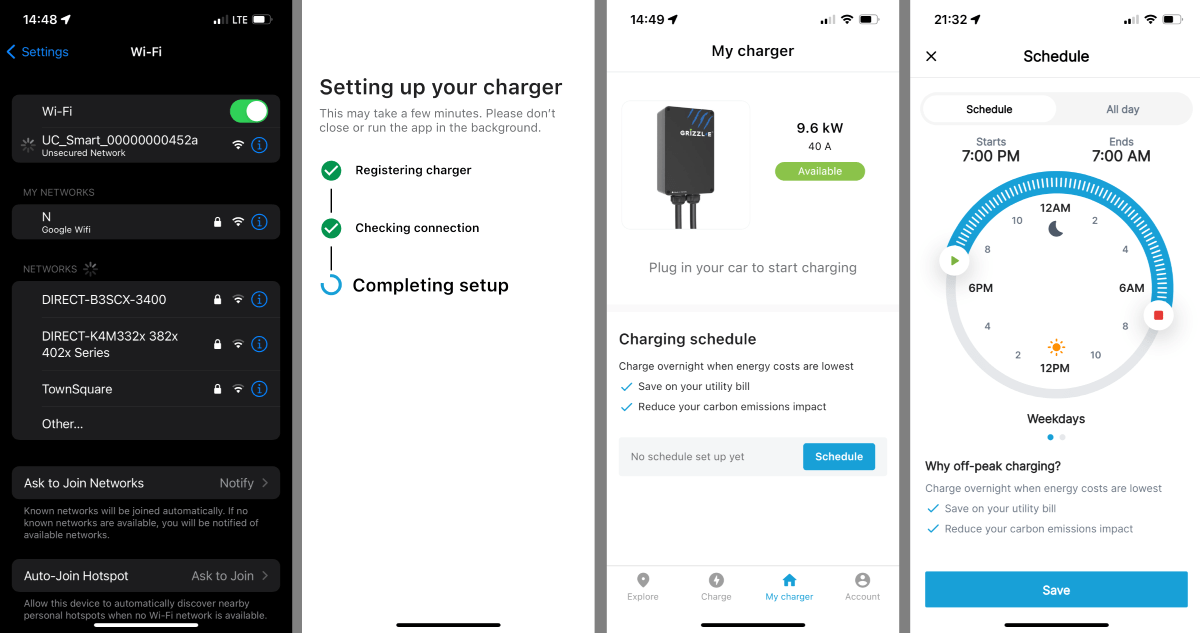
Scheduling
With the ChargeLab app, the Grizzl-E can be configured to only charge during off-peak hours and pause charging outside of that window of time. The app distinguishes between weekday schedules and weekend schedules. However, it appears there is no ability to schedule customized charging times for individual days of the week.
Conclusion
United Chargers made a winning product with the Grizzl-E. The Grizzl-E Classic is easy to recommend for users looking for a rugged, 40-amp home charging station at a very reasonable price.
Shopping Options
Full Review Gallery
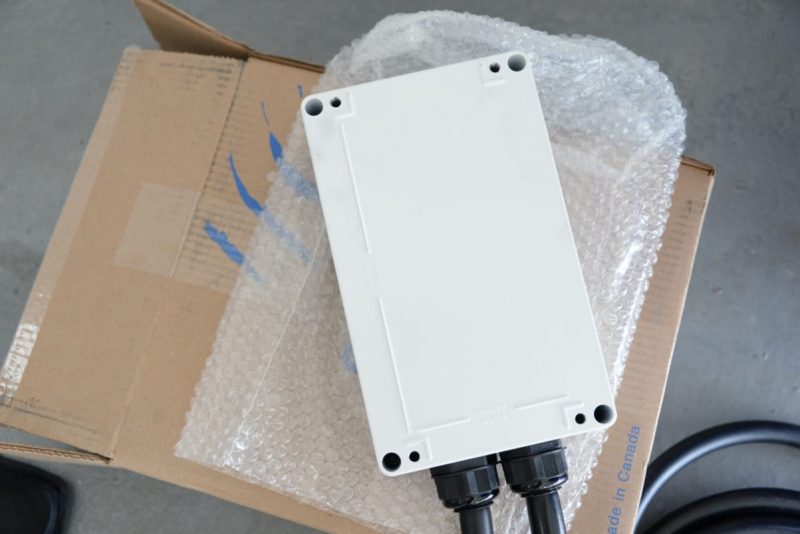
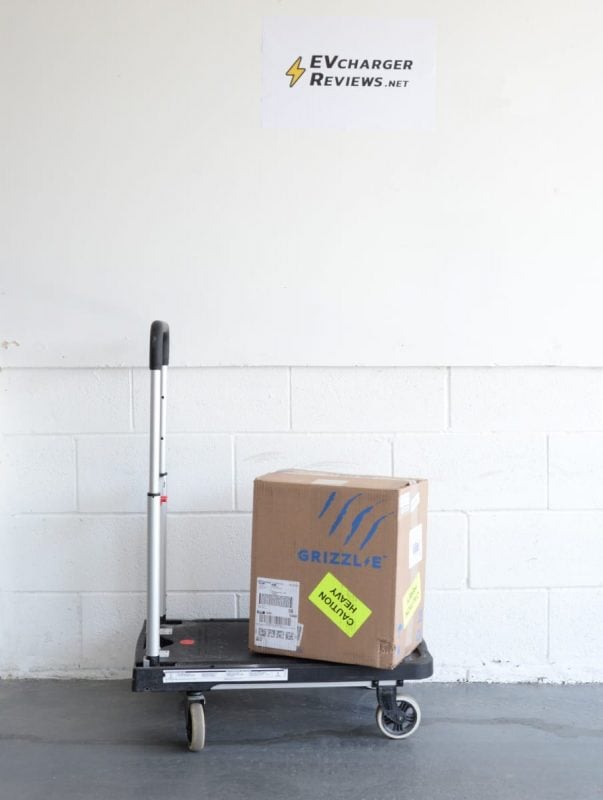
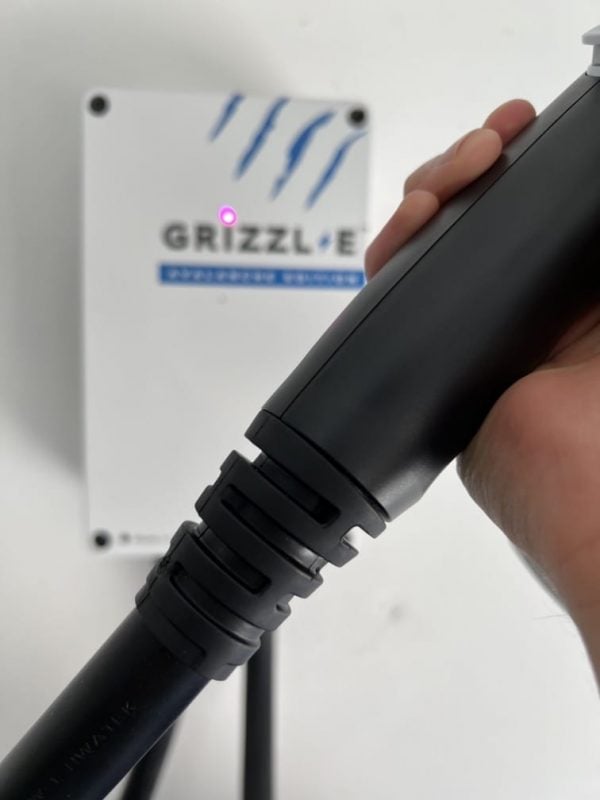
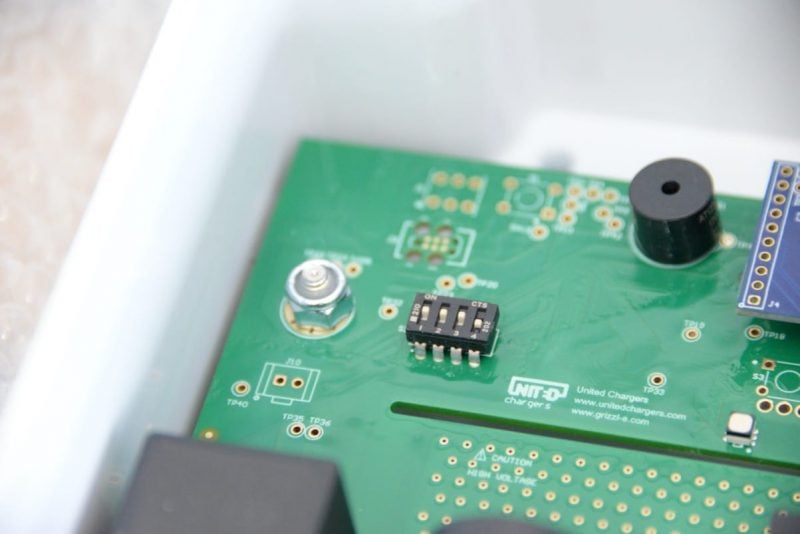
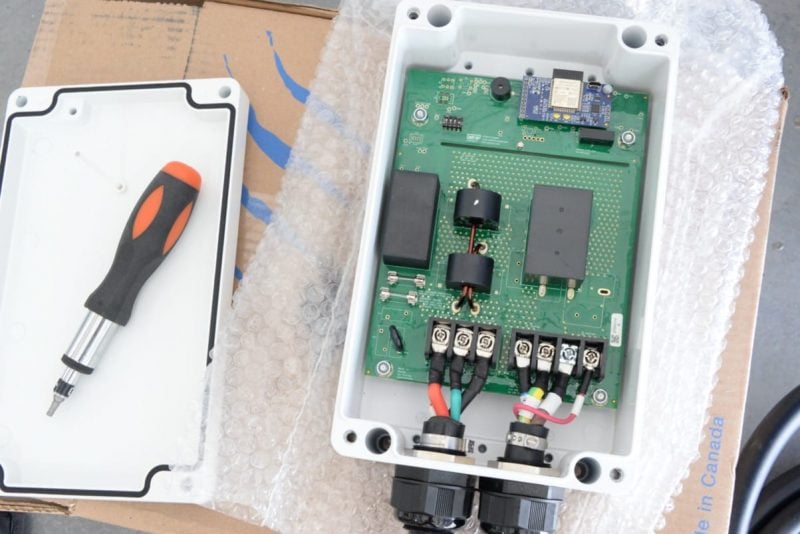
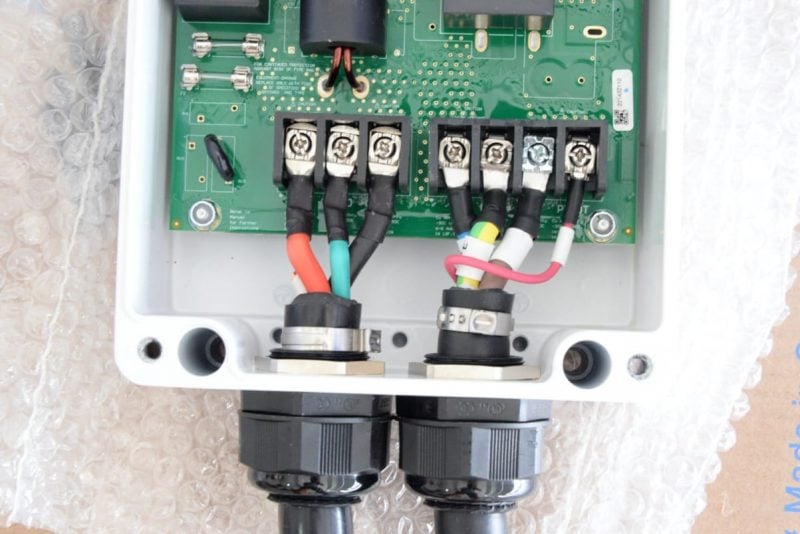
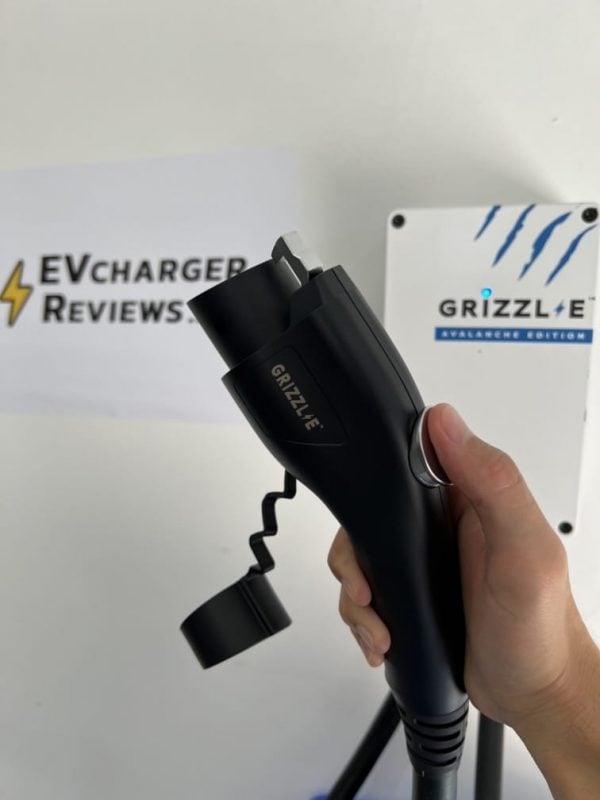
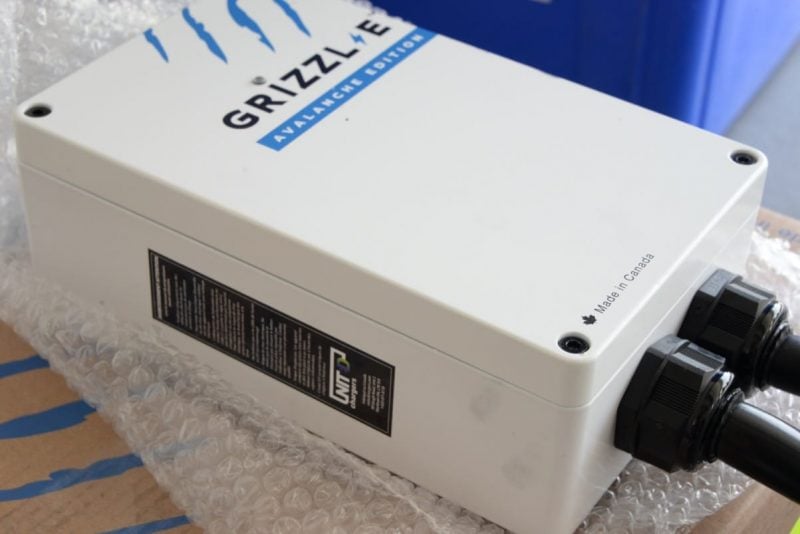
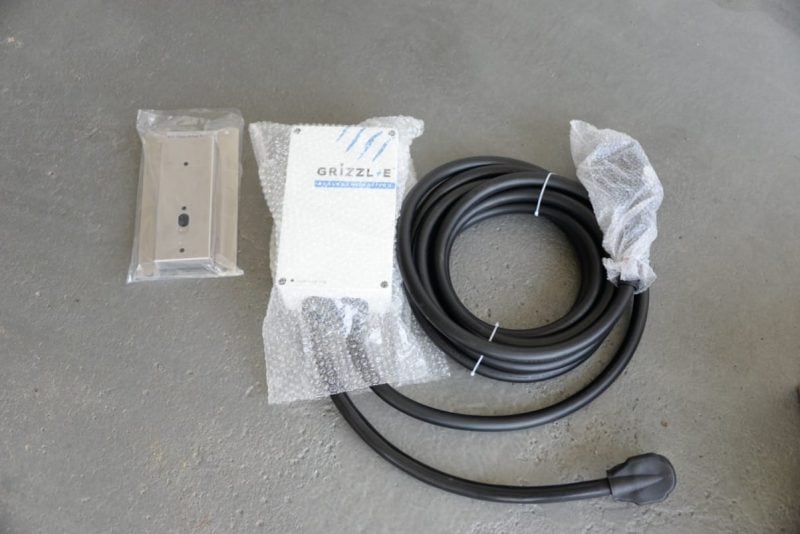
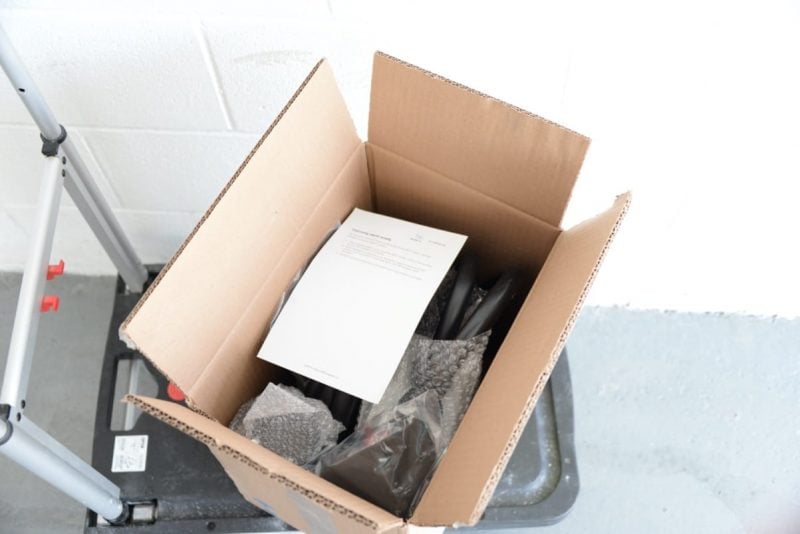
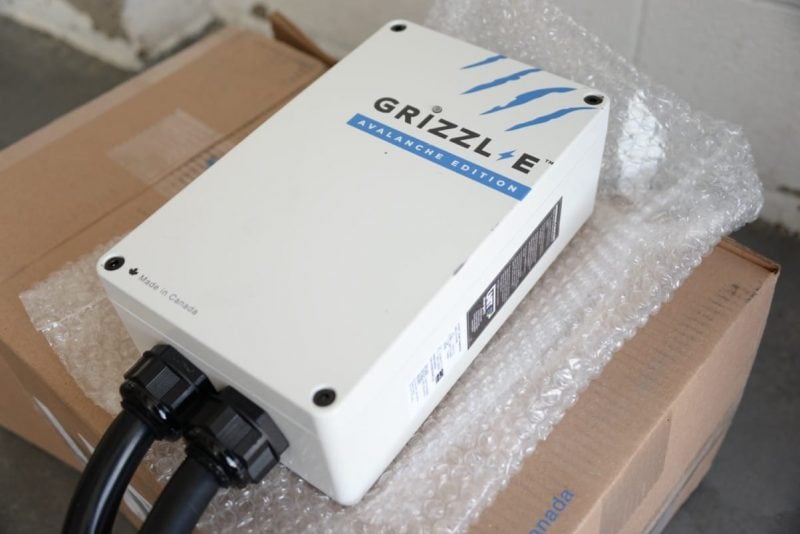
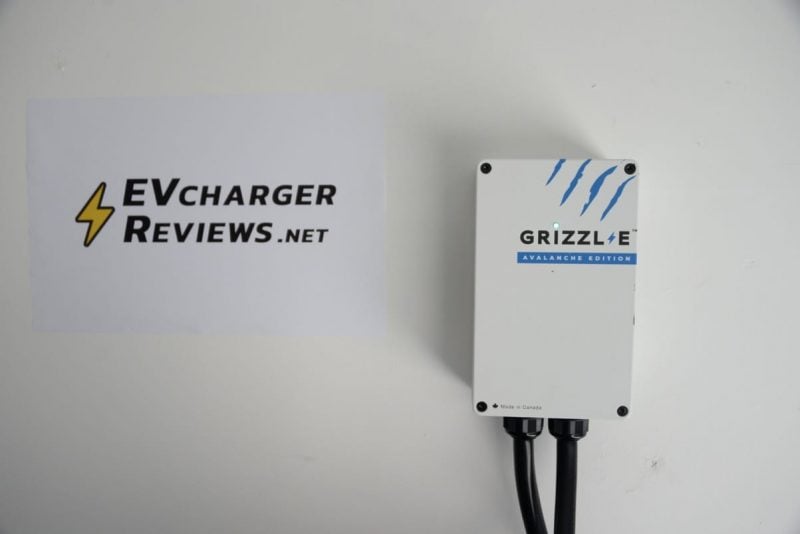
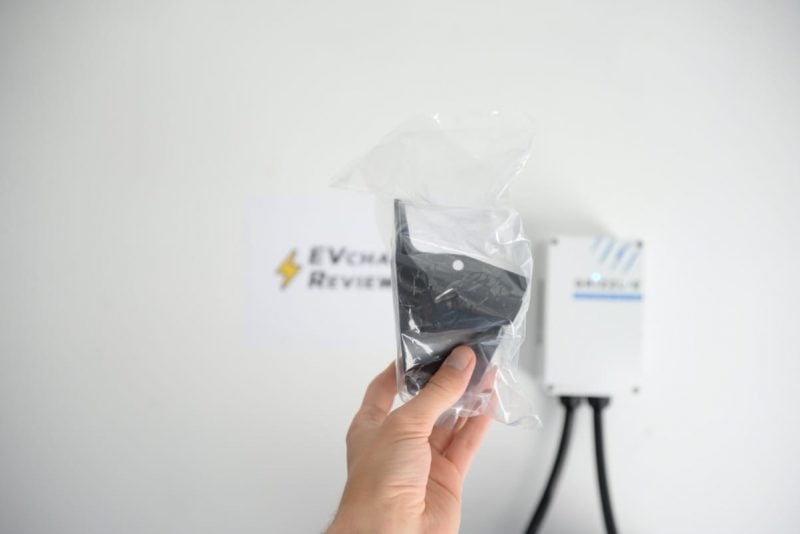
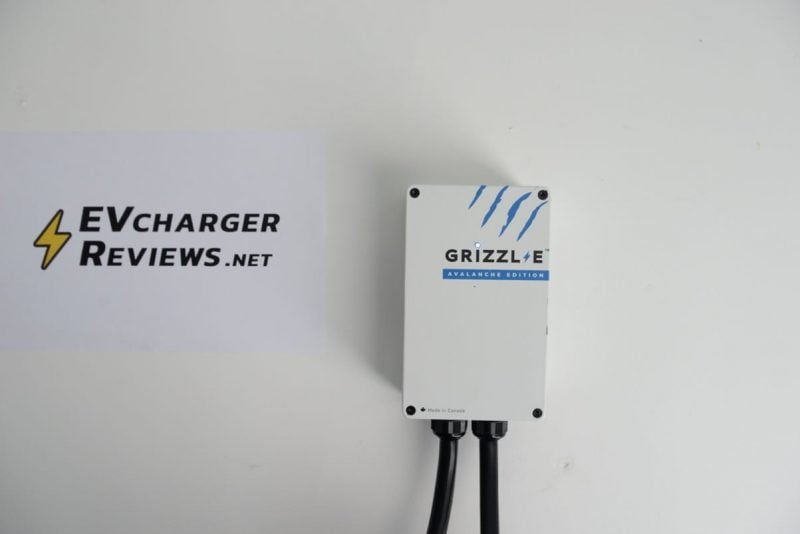
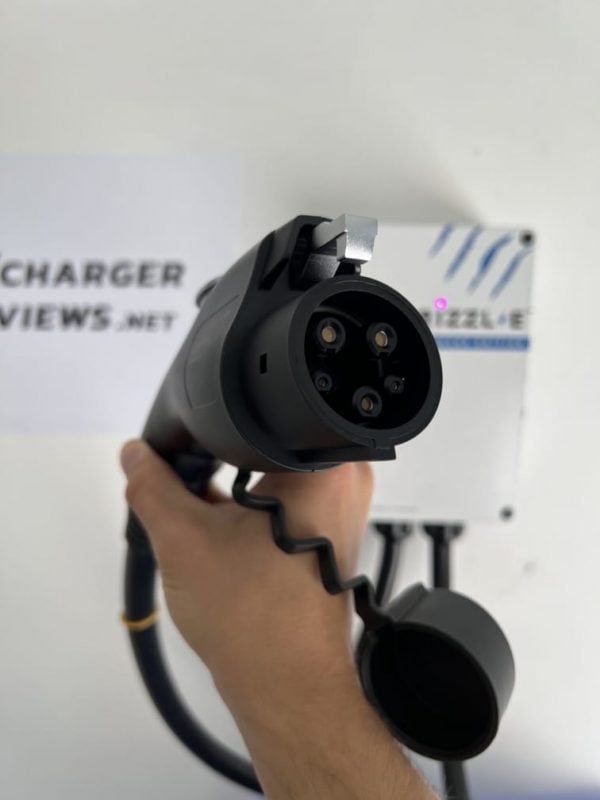
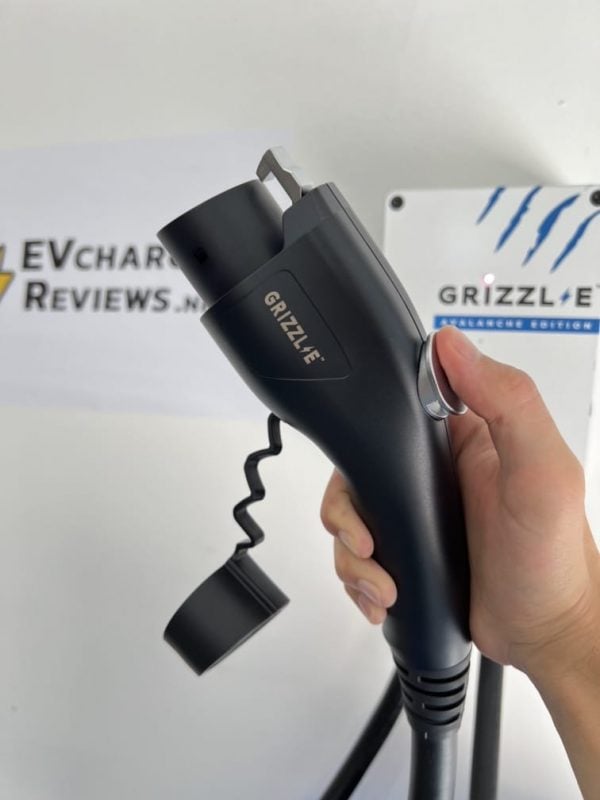
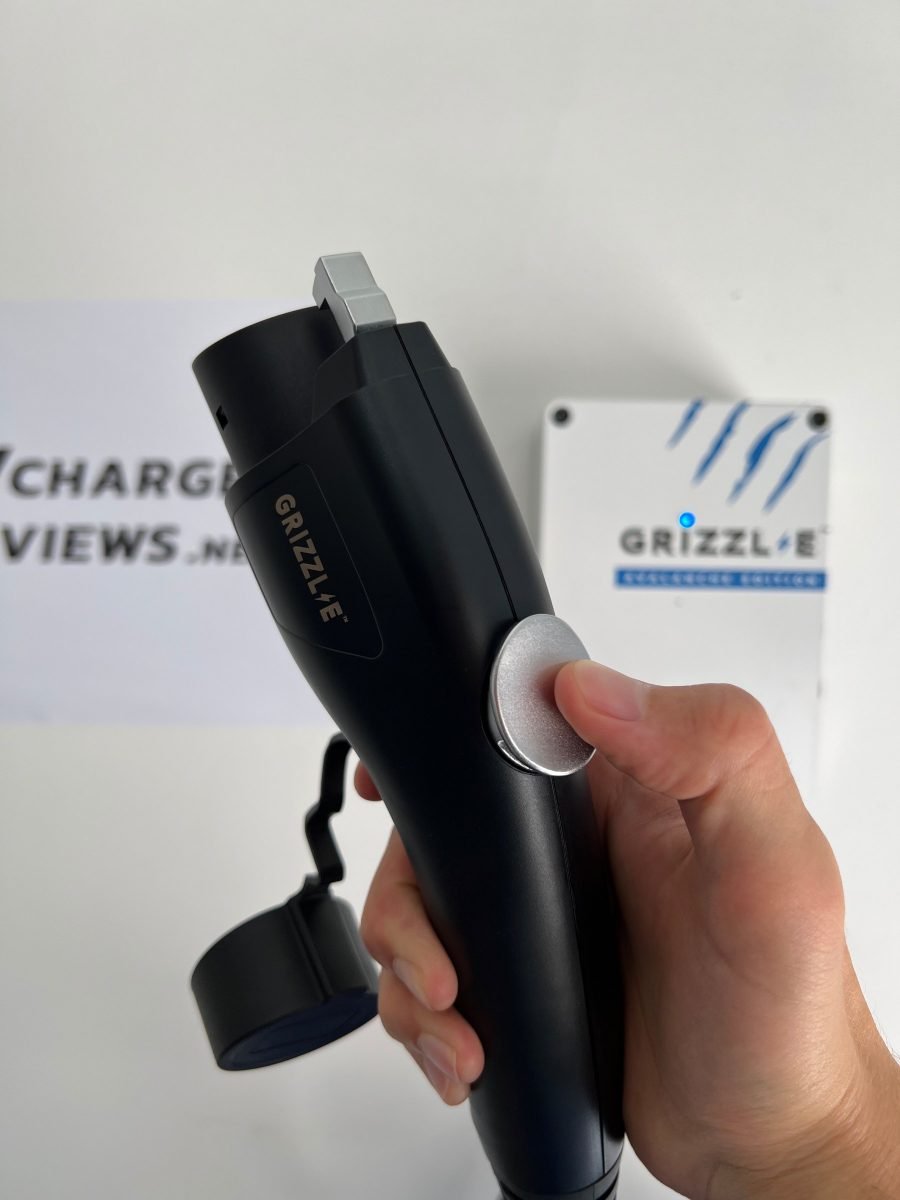
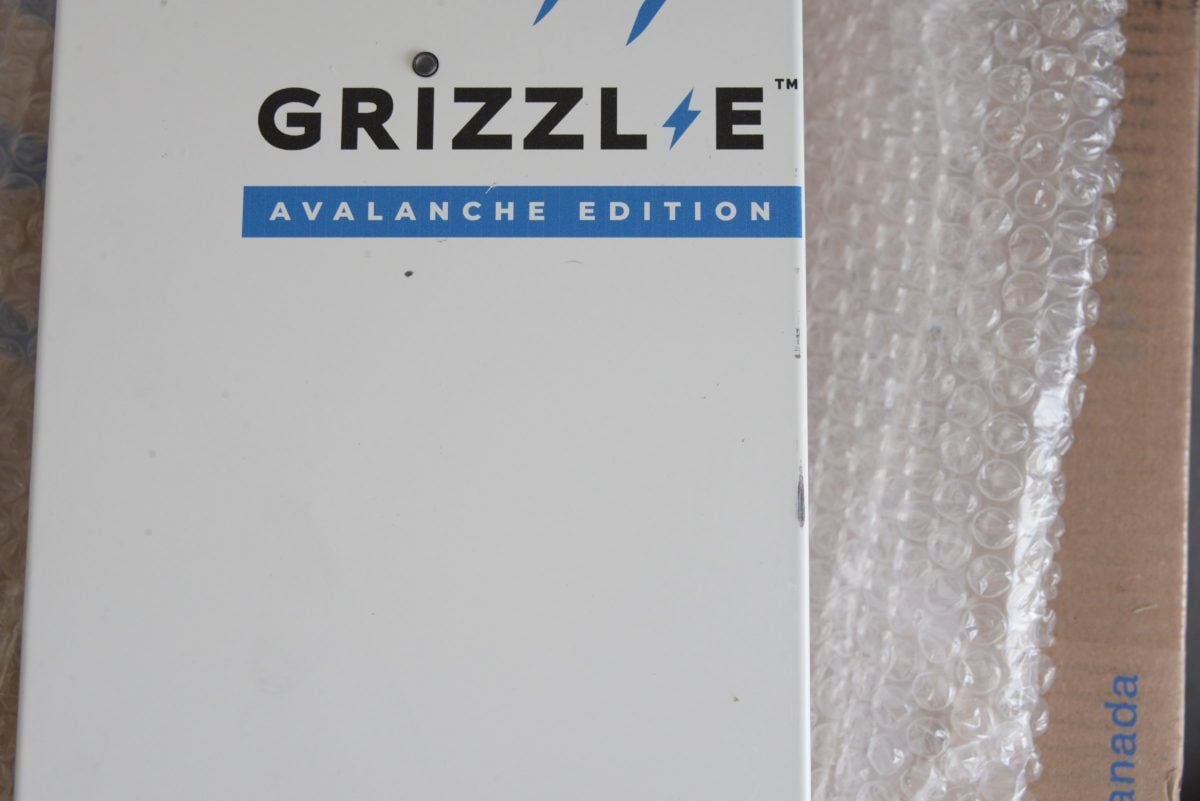
EVchargerReviews.net EVSE Review Methodology
We get the product into our facility, unbox it, inspect it, and install it just like the end user. We have a two-EV car garage with many electric miles accumulating weekly. We take EVSEs through a suite of tests, from short charging sessions, to long overnight charging sessions. We look at whether the claimed features work as expected. We check performance under challenging conditions; does the cord hold up to cold weather? Does the charging station throttle down amps due to heat and thermals? Does the Wi-Fi or Bluetooth drop the connection? Software bugs and glitches will surface during longer-term testing rather than a one-day trial. Measurements are taken on cord thickness and performance, and a thermal camera is used to look for surface hot spots after a 50 kWh stress test.
After living with the charging station product for at least two weeks, we are able to determine how the product compares to rivals, and if it deserves to be recommended to our readers.

